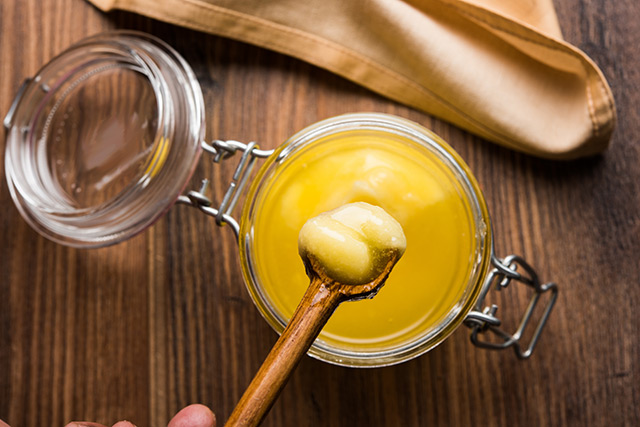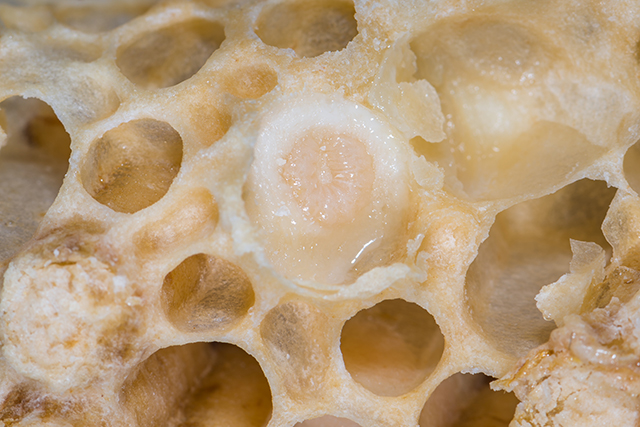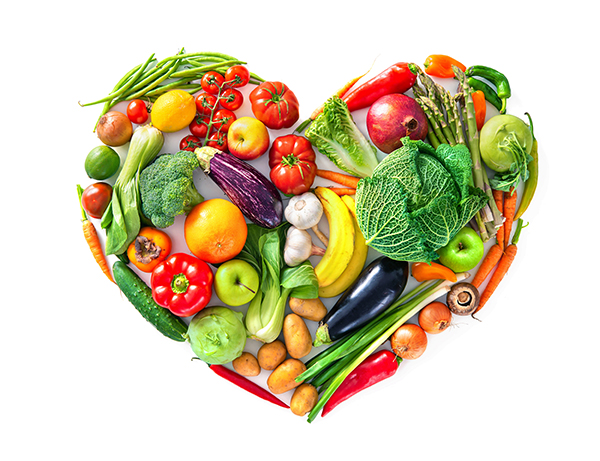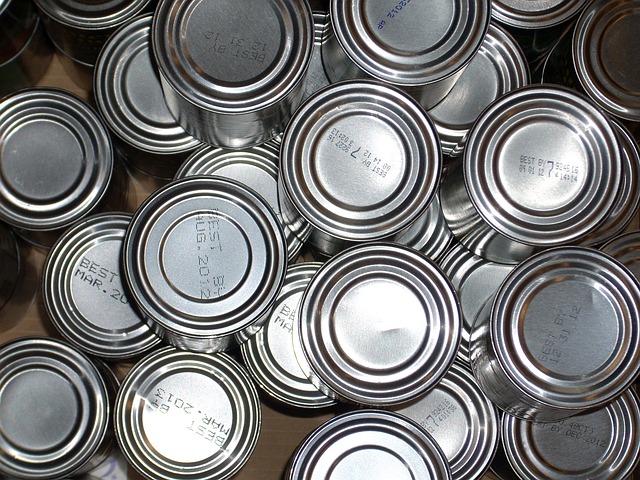Ghee: A healthy and nutritious alternative to butter
05/09/2025 / By Laura Harris

- A staple in Ayurveda for 5,000 years, ghee originated in India as a sacred, medicinal and culinary fat, prized for its ability to support digestion and longevity and its culinary uses, which include high-heat cooking.
- Rich in fat-soluble vitamins, CLA, butyrate and MCTs, ghee is lactose-free and casein-free, making it suitable for individuals with dairy sensitivities.
- Ghee is more stable than butter or olive oil for frying and sautéing and produces fewer harmful compounds like acrylamides compared to vegetable oils.
- Opt for organic, grass-fed ghee to avoid pesticides and heavy metals. Third-party tested brands ensure purity and higher omega-3s and CLA.
- Used in Indian dishes (curries, tadka, halwa), ghee is great for baking, sautéing and making bulletproof coffee, providing rich flavor and nutrition.
In the world of nutrition, few ingredients bridge tradition and modern wellness as seamlessly as ghee. Revered in Ayurveda for thousands of years, ghee is now celebrated globally as a nutrient-dense, digestion-friendly fat that enhances both health and flavor.
Unlike butter, it is lactose-free, shelf-stable and packed with fat-soluble vitamins, making it a superior cooking medium.
Brief history of ghee
Ghee is a form of clarified butter, traditionally made by simmering butter until the water evaporates and the milk solids separate, leaving behind a golden, nutty-flavored fat. Originating in ancient India, ghee has been a culinary and medicinal staple in Ayurveda (a 5,000-year-old holistic healing system) and is prized for its digestive and rejuvenating properties.
Historically, ghee was used as an offering in Hindu ceremonies; as a medicinal food in traditional medicine that promotes longevity and balances the body’s doshas; and as a stable cooking fat in regions with warm climates.
Ghee entered the modern wellness scene when Western nutritionists recognized its high smoke point (485 F or 252 C), which makes it ideal for frying and sautéing without oxidation. Unlike butter and vegetable oils, ghee doesn’t break down and produce harmful free radicals at high heat.
Ghee is also free of casein and lactose, making it a safer option for those with dairy sensitivities. (Related: Ghee: A look at its health benefits.)
Nutritional benefits of ghee
Ghee is rich in healthy fats, fat-soluble vitamins and other beneficial components, offering multiple health advantages:
Fat-soluble vitamins
- Vitamin A – supports healthy vision and immune function
- Vitamin D – boosts bone health and immunity
- Vitamin E – a powerful antioxidant that combats oxidative stress
- Vitamin K2 – an essential nutrient for heart health and calcium metabolism
CLA (conjugated linoleic acid)
- Aids in fat loss and muscle preservation
- Helps reduce inflammation
Healthy fatty acids
- Butyrate (a short-chain fatty acid) – supports gut health, reduces inflammation and protects against colon cancer
- MCTs (medium-chain triglycerides) – promote satiety, healthy brain function and weight management
While ghee is highly nutritious and easier on the stomach than regular butter, its safety depends on sourcing. Conventionally produced ghee may contain residual pesticides (from cows fed non-organic diets like corn and soy) or heavy metals (if sourced from contaminated regions).
For the healthiest option, choose organic, grass-fed ghee, which is higher in beneficial omega-3 fatty acids and CLA and lower in contaminants than non-organic ghee. Prioritize brands that undergo third-party testing to verify purity and ensure no additives, pesticides or heavy metals are present.
Culinary uses and recipes to try
Ghee’s rich, nutty aroma and high smoke point make it a versatile ingredient in both traditional and modern recipes. It is commonly used in:
- Indian cuisine – for tempering spices (tadka), dals, curries and sweets
- Baking – excellent butter substitute in cakes, cookies and pastries
- Frying and sautéing – great for stir-fries, roasted vegetables and eggs
- Bulletproof coffee – blended into coffee with MCT oil for sustained energy
Popular dishes made with ghee include:
- Dal tadka – lentils tempered with ghee and spices
- Ghee rice – fragrant basmati rice cooked with ghee
- Halwa – traditional dessert made with ghee, sugar and semolina
- Roti/Paratha – flaky Indian breads brushed with ghee
Ghee is more than just a cooking fat – it is a nutritional powerhouse that can support healthy metabolism, digestion and overall vitality. Whether you’re sautéing vegetables, baking or just spreading it on toast, ghee offers a richer, cleaner and healthier alternative to butter or vegetable oils.
This story is not medical advice and is not intended to treat or cure any disease. Always consult with a qualified naturopathic physician for personalized advice about your specific health situation or concern.
Learn more about the health benefits of other superfoods and natural ingredients at NaturalNews.com, your trusted source for wellness insights and nutritional knowledge.
For cutting-edge tools to expand your understanding of natural health, try Brighteon.ai, an innovative AI model created by Mike Adams, the Health Ranger. This free, downloadable tool is designed to decentralize knowledge, bypass censorship, and empower individuals with actionable information.
If you’re passionate about nutrition, natural medicine and uncensored discussions, visit Brighteon.com, a free speech video platform, and join our vibrant communities on Brighteon.IO and Brighteon.social. Dive into open conversations about food, ingredients and holistic health today!
Watch this video to know the 6 reasons why ghee is a healthier alternative to butter.
This video is from the Natural News channel on Brighteon.com.
More related stories:
Ghee: A clarified butter rich in essential fats and vitamins.
A “butter” alternative: Adding ghee to your diet can improve gut health.
Ditch harmful VEGETABLE OILS for these healthy substitutes.
Sources include:
Submit a correction >>
Tagged Under:
#nutrition, butter substitute, food is medicine, food science, functional food, ghee, grocery, grocery cures, health science, ingredients, natural health, nutrients, organics
This article may contain statements that reflect the opinion of the author




















